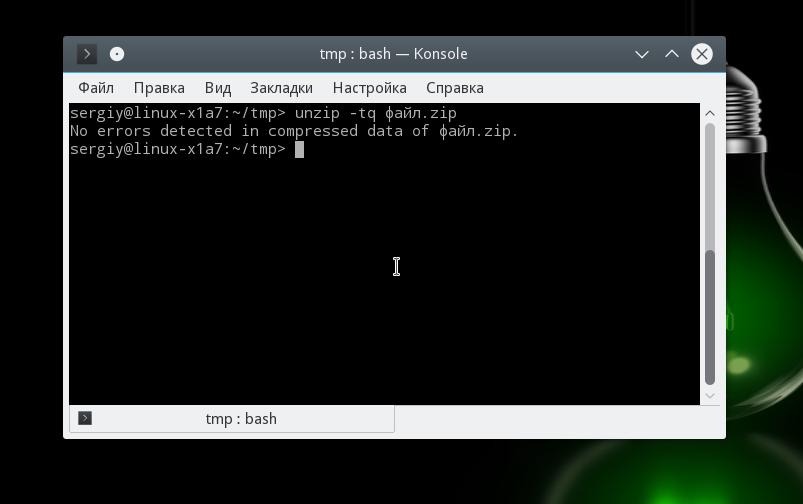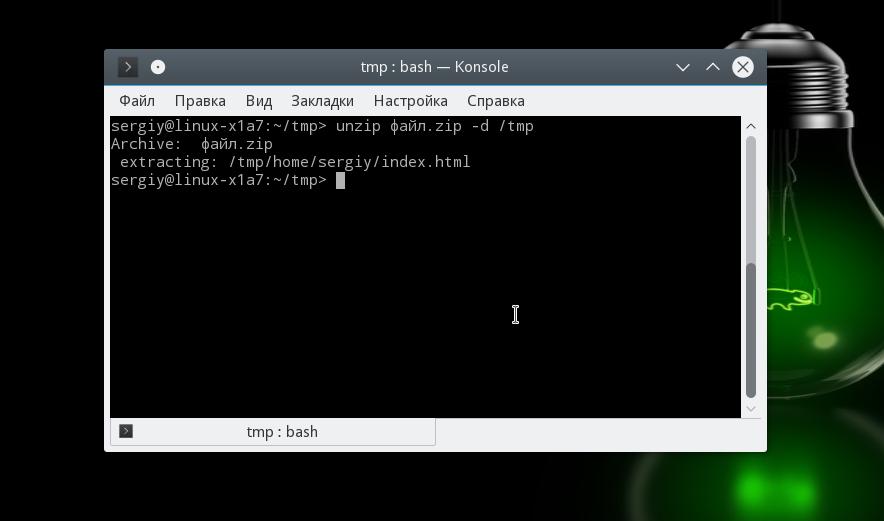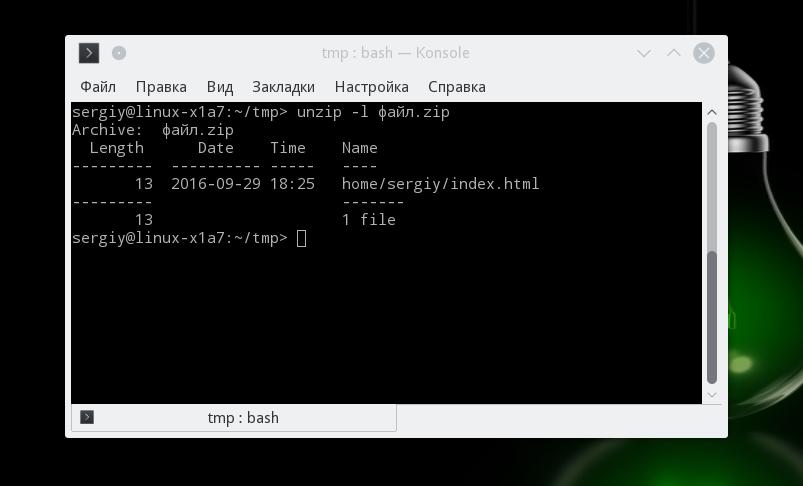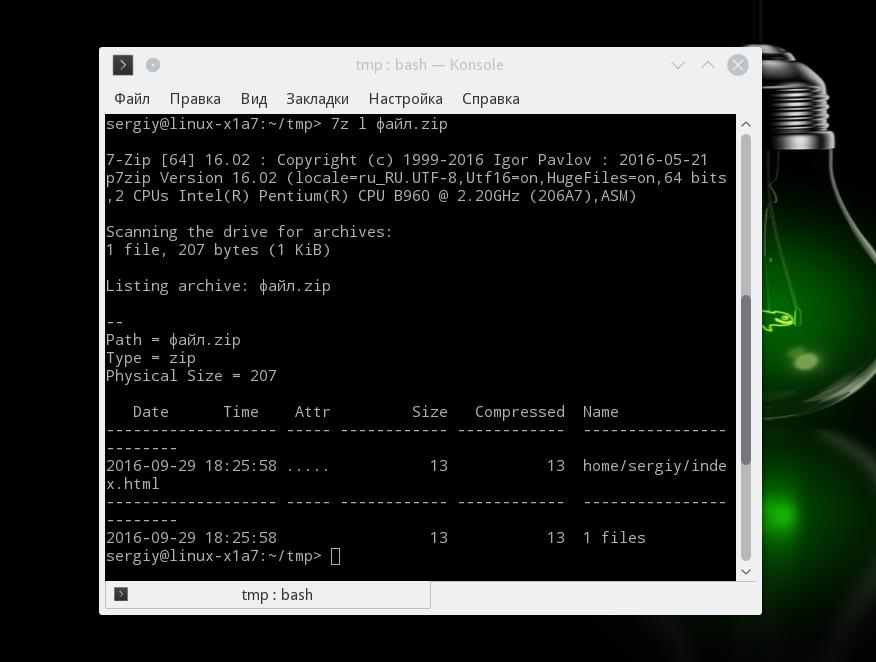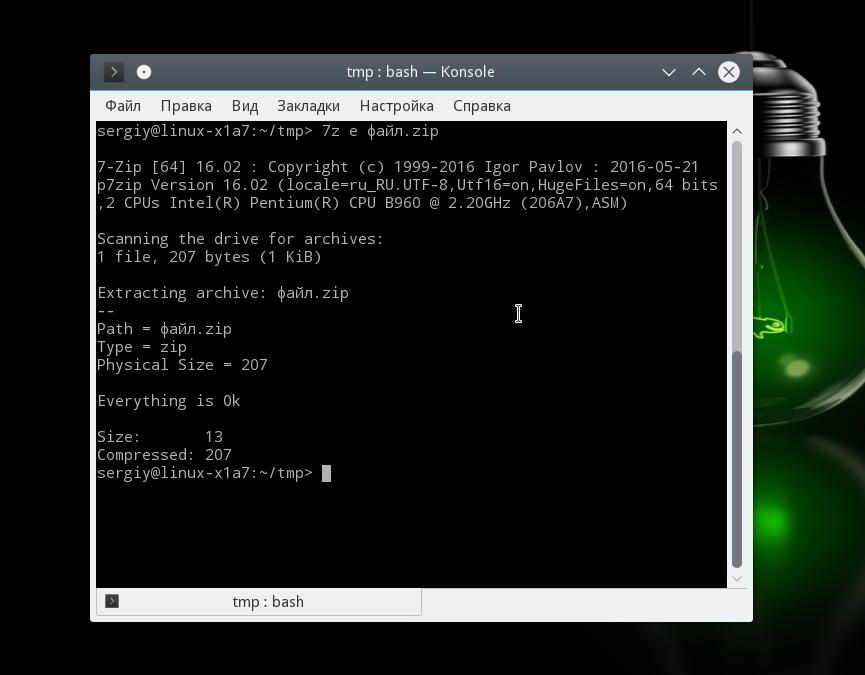Как распаковать ZIP в Linux
В операционной системе Windows формат архивов ZIP считается чуть ли не стандартным, он даже поддерживается в этой операционной системе, что называется «из коробки». Если вы только перешли с Windows, то у вас, наверное, есть много таких архивов с различными файлами, также ZIP-архивы могут часто попадаться на просторах интернета. Поэтому работать с такими файлами в Linux вам однозначно придётся.
В этой небольшой статье мы рассмотрим, как распаковать ZIP Linux. Разберём несколько способов и воспользуемся несколькими утилитами, которые справятся с этой задачей.
Распаковка ZIP Linux
Формат ZIP был создан в 1989 году на замену очень медленному формату ARC. Здесь используется сжатие deflate, и на то время оно работало намного быстрее чем ARC. Исторически сложилось так, что стандартным форматом для Linux стали TAR и GZ — это усовершенствованные алгоритмы сжатия и архивации. Многие графические распаковки воспринимают и ZIP-файлы. Но они обрабатывают архивы не сами, а дают команду предназначенным для этого формата утилитам.
Утилита для распаковки ZIP называется unzip, она не всегда установлена по умолчанию. Но вы можете очень просто добавить её в свою систему из официальных репозиториев. Для этого в Ubuntu выполните:
А в системах, использующих формат пакетов Red Hat, команда будет выглядеть немного по-другому:
sudo yum install unzip zip
После установки большинство графических утилит для работы с архивами смогут распаковать архив ZIP Linux. Команда ZIP Linux установлена на случай, если вы захотите создавать ZIP-архивы.
Но этой утилите не нужны дополнительные оболочки для распаковки архива. Вы можете сделать всё прямо из консоли. Давайте рассмотрим синтаксис утилиты:
$ unzip опции файл_архива.zip файлы -x исключить -d папка
- файл архива — это тот файл, с которым нам предстоит работать;
- файлы — здесь вы можете указать файлы, которые нужно извлечь, разделять имена файлов пробелом;
- исключить — файлы, которые извлекать не нужно;
- папка — папка, в которую будет распакован архив.
Теперь рассмотрим опции утилиты, поскольку она позволяет не только распаковывать архивы, но и выполнять с ними определённые действия:
- -l — вывести список файлов в архиве;
- -t — протестировать файл архива на ошибки;
- -u — обновить существующие файлы на диске;
- -z — вывести комментарий к архиву;
- -c — извлекать файлы на стандартный вывод, перед каждым файлом будет выводиться его имя;
- -p — то же самое, только имя выводится не будет;
- -f — извлечь только те файлы, которые уже существуют на диске, и файлы в архиве более новые;
- -v — вывести всю доступную информацию;
- -P — указать пароль для расшифровки архива;
- -n — не перезаписывать существующие файлы;
- -j — игнорировать структуру архива и распаковать всё в текущую папку;
- -q — выводить минимум информации.
Все самые основные опции рассмотрели, теперь давайте рассмотрим несколько примеров работы с программой в терминале. Чтобы распаковать ZIP Linux в текущую папку, достаточно набрать:
Причём расширение указывать не обязательно. Протестировать архив можно с помощью опции -t:
Вы можете протестировать все архивы в текущей папке, выполнив:
Если нужно распаковывать архив не в текущую папку, можно очень просто указать нужную:
Также можно распаковывать не весь архив, а только нужные файлы или файлы нужного формата:
unzip имя_файла.zip \*.txt -d /tmp
С помощью опции -l вы можете посмотреть список файлов в архиве:
Утилиту unzip разобрали и теперь вы с ней точно справитесь. Но я говорил, что мы рассмотрим несколько способов, как выполняется распаковка ZIP Linux. Поэтому дальше мы поговорим об утилите 7z.
Демонстрация работы утилит zip и unzip в терминале:

Как распаковать ZIP Linux с помощью 7z
7z — это кроссплатформенный набор утилит для работы с архивами. Кроме собственного формата, здесь поддерживается большое количество других, в том числе tar и zip. Плюс этой утилиты — в контекстное меню файлового менеджера будет добавлен пункт, с помощью которого вы сможете распаковывать или создавать архивы.
Для установки утилиты в Ubuntu или Debian выполните:
sudo apt install p7zip-full
Теперь вы можете использовать контекстное меню вашего файлового менеджера, чтобы распаковать архив ZIP Linux. Также можно использовать программу в консоли. Синтаксис очень похож на unzip:
$ 7z команда опции имя_архива
Команда задаёт нужное действие. Нас будут интересовать только четыре команды:
Теперь рассмотрим самые полезные опции:
- -o — указать папку для распаковки;
- -p — указать пароль;
- -x — не извлекать эти файлы;
- -w — указать рабочую директорию;
- -y — отвечать положительно на все вопросы;
Ну и рассмотрим примеры работы с утилитой. Сначала проверим содержимое архива:
Распаковываем архив, сохраняя структуру подкаталогов:
Или распаковываем все файлы в одну папку, игнорируя подкаталоги:
Или вы можете указать папку, в которую нужно распаковать файлы с помощью опции -o:
Выводы
В этой статье была рассмотрена распаковка ZIP Linux, как видите, это ненамного сложнее, чем распаковка стандартных архивов TAR. Мы рассмотрели два способа ,и теперь вы точно будете знать, что делать, когда столкнетесь с такой ситуацией. Если у вас остались вопросы, спрашивайте в комментариях!
Обнаружили ошибку в тексте? Сообщите мне об этом. Выделите текст с ошибкой и нажмите Ctrl+Enter.
How To Unzip A File In Linux | Unzip Syntax | 8 Unzip Commands
If you have a compressed zip file, you can unzip it using the Linux command line. Linux’s unzip command is highly flexible just like zip commands and can be used for much more than simply extracting zip files. Files from a ZIP archive, which are often seen on MS-DOS computers, can be listed, tested, or extracted using Unzip. If no settings are provided, the default behavior i.e. with no options will extract all files from the supplied ZIP archive into the current file and all subdirectories beneath it.
Unzip syntax
First of all, you need to install the unzip package. To do so, type in a terminal command:
sudo apt-get install unzip
Once all the packets have been installed, to unzip the archive files type in a terminal command:
A more useful tool is 7z, which zips and unzips a range of compression formats, notably lzma, usually the protocol offering the highest compression rates.
sudo apt-get install p7zip-full
Extract the zip file with Linux
- Open the Files app and navigate to the directory where the zip file is located.
- Locate the file which you want to unzip.
- Right-click on the file and the context menu will appear with the list of options.
- Select the “Extract Here” option to unzip files into the present working directory or choose “Extract to. ” for a different directory.
Unzip arguments in Linux
Some of the most commonly used arguments by unzip are listed below:
It tells the path of the zip archive(s). When a wildcard is used in the file specification, the operating system chooses the order in which each matching file is processed (or file system). The path itself cannot be a wildcard; only the filename can.
A list of archive members to process that can be optional, delimited by spaces. (VMS versions that have VMSCLI specified during compilation had to delimit files using commas. (For further information, see -v in the section below that lists your options.) You can match several members using regular expressions (wildcards).
An optional list of archive members to be excluded from processing. This option can be used to exclude any files that are in subdirectories because wildcard characters often match (‘/’) directory separators (for exceptions see the option -W).
If specified, files will be extracted to the target directory exdir. By default, all files and subdirectories are recreated in the current directory; the -d option allows extraction in an arbitrary directory (always assuming one has permission to write to the current working directory). This option need not appear at the end of the command line; it is also accepted before the zip file specification (with the normal options), immediately after the zip file path, or between the file(s) and the -x option.
Unzip commands/Options in Linux
To unzip a file, you do not need to add any options like the zip command. With unzip, the default behavior is to always seek permission before overwriting current files. Using unzip, you can extract every letter from the archive. Create any necessary subdirectories, then unzip into the current directory and any subdirectories below it options and commands that unzip accepts and uses are:
1. Unzip a file to a different directory
To unzip a ZIP file to a different directory than the current folder, we use the -D (Directory) Option. Go to the file manager and click on the zip file you want to unzip. Now open the terminal window and run the following command:
Command: $ unzip filename.zip -d /path/to/directory
2. Unzip tar/tar.gz/tgz files to a specific directory
Most files in Linux are compressed using the tar format. A .tar file is a collection of uncompressed files, sometimes known as a tarball. Since .tar doesn’t compress anything, it requires a separate compression utility for compression. The tar command allows you to create tar archive files as well as decompress them. This technique can be used on other file types/ file formats also. Using tar UtilityA tar.gz file is a combination of a .tar file and a .gz file. By default, the tar command will extract files to your current directory. Go to the terminal window and run the following command:
Command: $ tar -xf file-name.tar -C /path/to/directory
The -x option tells tar to extract the files. You can also use xargs with tar to create a tar.gz archive and populate it with files from the find command. Note: Some graphical interfaces include a tool for managing tar.gz files without the command line. Working with the graphical interface is a little difficult task.
3. Unzip a password-protected zip file
To unzip a file that is password-protected, invoke the unzip command with the -P option i.e -P (Password) Option followed by the password:
Command: $ unzip -P PasswOrd filename.zip
4. Exclude Files when Unzipping a ZIP File
To exclude specific files or directories from being extracted, use the -X (Exclude) option in the terminal :
Command: $ unzip filename.zip -x file1-to-exclude file2-to-exclude
5. Suppress the Output of the unzip Command
By default, unzip prints the names of all the files it’s extracting and a summary when the extraction is completed. Use the -q switch to suppress the printing of these messages.
Command: $ unzip -q filename.zip
6. Overwrite existing files
If you want to overwrite existing files without prompting, it can be done using the -o option. To run the -o (overwrite) option open the terminal window and run the following command:
Command: $ unzip -o filename.zip
7. Unzip a zip file without overwriting existing files
This command can be performed using the -n option which forces unzip to skip the extraction of a file that already exists:
Command: $ unzip -n filename.zip
8. List the Contents of a zip file
To list the contents of a given zip file we use the -l (list archive) option. To execute the -l option to the current file, open the windows terminal and type the following command:
Command: $ unzip -l filename.zip
Summary
The unzip utility is an extremely effective and straightforward tool for transferring compressed files over a network or even between operating systems. From the above tutorial, you can easily unzip files in Linux systems through the command line using the unzip command.
Suggested reads:
I am a storyteller by nature. At Unstop, I tell stories ripe with promise and inspiration, and in life, I voice out the stories of our four-legged furry friends. Providing a prospect of a good life filled with equal opportunities to students and our pawsome buddies helps me sleep better at night. And for those rainy evenings, I turn to my colors.

